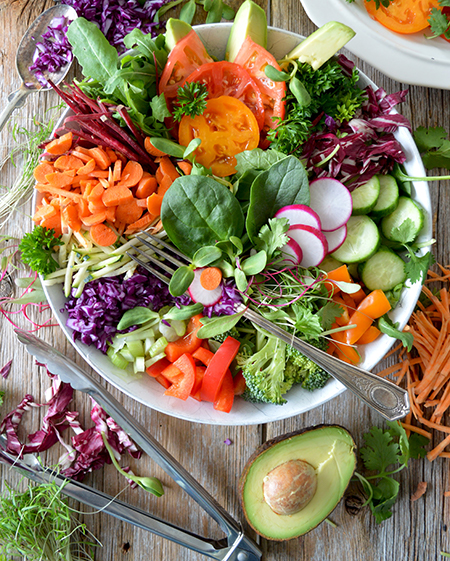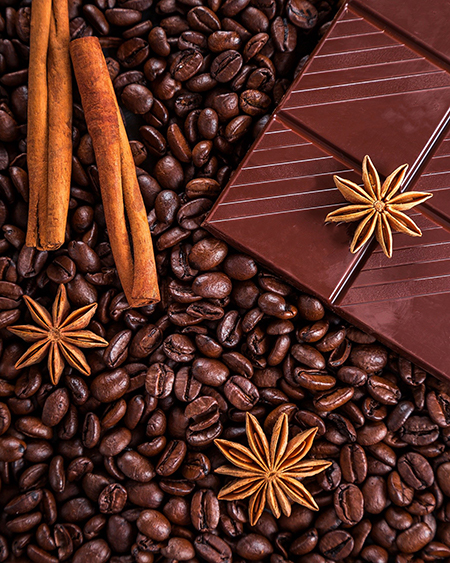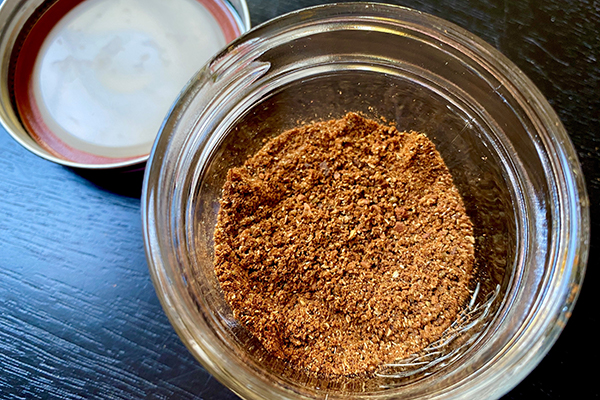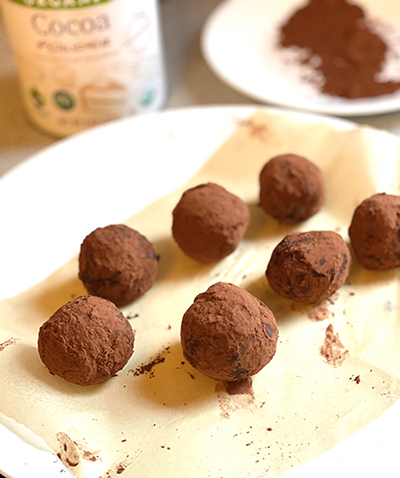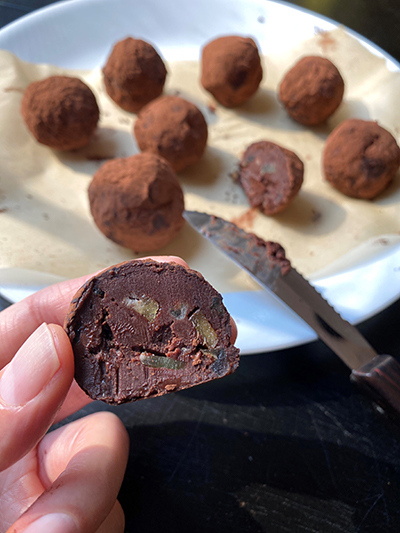We’ve all heard that we need to eat more plant foods, but what is it about plant foods that make them so good for us? Plants foods have many benefits, but beyond their fiber, vitamin and mineral content is their amazing and powerful polyphenol content.
What are polyphenols?
Phytochemicals are compounds found in plant foods that contribute to their color, smell and flavor. There are tens of thousands of phytochemicals.
Polyphenols are the largest group of phytochemicals consisting of more than 8,000 different compounds that can be divided further into groups or classes such as flavonoids, lignans, and tannins to name a few.
Polyphenols help protect the plant from insults, like bugs, fungi, bacteria or too much UV light. It is important to keep in mind that most foods contain many different kinds of phytochemicals. For example, tomatoes may contain as many as 10,000 different phytochemicals. The overall amount can vary depending on growing conditions, processing and storage of the food. The more “stressed” the plant is, the more polyphenols and overall phytochemicals it contains. Therefore, aim for organic or small farm raised, or grow your own (if possible).
#Polyphenols are powerful plant compounds that positively impact almost every aspect of your health. #saslife Click To TweetWhat powerful properties do polyphenols have?
In general, polyphenols are potent antioxidants. However, there are tens of thousands of studies on polyphenols showing a wide range of other amazing benefits such as:
- Reducing inflammation caused by environmental toxins
- Having antiviral and antibacterial actions (and here)
- Improving glucose management, cholesterol levels and vascular function, reducing oxidative damage and inflammation and regulating blood pressure in those with Type 2 Diabetes
- Positively impacting your microbiome (and here)
- Helping protect your skin against UV radiation and oxidative damage
- Decreasing your risk of skin cancer
- Increasing longevity and reducing your risk of death (green tea and coffee specifically)
- Inducing autophagy (the process whereby cells “clean house,” which decreases with age)
- Stimulating neurogenesis (new brain cells!)
- Improving mood
- Supporting mitochondrial function
- Activating sirtuins (longevity genes), and more.
The exact actions of phytochemicals and polyphenols in your body vary depending on your unique microbiome. Gut bacteria impact the amount of polyphenols that get absorbed and utilized in your body. And polyphenols act as prebiotics, increasing the amount of healthy gut bacteria.
Which foods contain polyphenols?
Polyphenols are in all plant foods – not just fruits and veggies! They can also be found in tea, coffee, legumes, nuts and seeds and in very high amounts in herbs and spices.
Here is a list of the top 10 polyphenol rich foods per 100g.
- Cloves
- Peppermint, dried
- Star anise
- Cocoa powder
- Mexican oregano, dried
- Celery seed
- Black chokeberry
- Dark chocolate
- Flaxseed
- Black elderberry
Here is a list of the top 10 polyphenol rich foods by typical serving size.
- Black elderberry
- Black chokeberry
- Blackcurrant
- Highbush blueberry
- Globe artichoke heads
- Coffee
- Lowbush blueberry
- Sweet cherry
- Blackberry
- Plum
How do I get more polyphenols?
Don’t rely on supplements to get polyphenols. Sure, there are some supplements like curcumin or resveratrol that have benefits on their own, but remember what I said about tomatoes? There are thousands of polyphenols in just one food. Imagine how many hundreds of thousands of polyphenols and phytochemicals you get when you eat a real, whole foods-based diet rich in a variety of colorful plant foods...there is no way you can get that from a supplement. Instead, focus on boosting polyphenol intake by:
- Eating the rainbow! Up your veggie intake and add colorful fruits. Check out this blog and handout for ideas on how to do that.
- Spicing up your meals. Spices not only make your food taste better, but they are some of the most polyphenol rich sources! Check out these blogs for more ideas on incorporating spices: Spice It Up, Cinnamon, Ginger, Turmeric.
- Drinking coffee (decaf is fine) or tea (priorities going to green tea).
Note: The specific polyphenols found in tea and coffee can reduce iron absorption by up to 64%. If you struggle with keeping iron levels up, make sure you don’t have tea or coffee with your iron-rich meals or supplements.
Chinese 5 Spice Powder
Makes ¼ cup
Recipe from: Feasting at Home
PRINT RECIPE
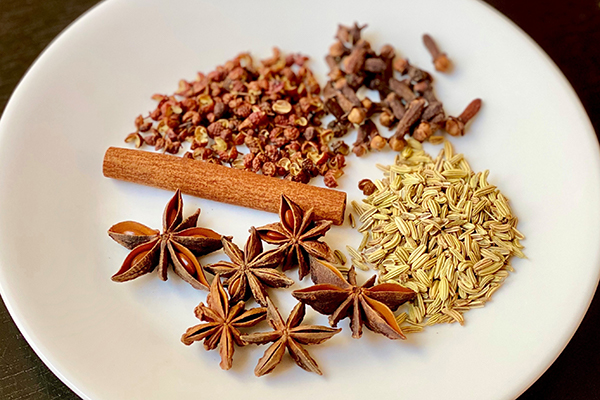
This high polyphenol spice blend is great in many different kinds of recipes like Pulled Pork Tacos with Asian Slaw, Five-Spice Black Bean and Cremini Tacos with Avocado or even sweet treats like Chinese 5 Spice Hot Chocolate or the truffle recipe below.
Ingredients
6 star anise pods
1½ tsp whole cloves
1 cinnamon stick (3 inches long)
2 Tbsp fennel seeds
2 tsp Szechuan peppercorns (or sub 3 tsp regular peppercorns – but it’s not really the same)
Instructions
- Place all ingredients in a spice grinder (or a very clean coffee grinder) and grind until smooth.
- Store in a sealed, airtight spice jar. For best flavor use within 6 months.
Notes
- For more intense flavor, lightly toast whole seeds/pods in a dry skillet for a couple of minutes before grinding.
- If you don’t have a coffee or spice grinder, combine the following:
- 2 Tbsp ground anise
- 1 Tbsp whole Szechuan peppercorn (and use a pepper grinder)
- 1 Tbsp ground fennel
- 2¼ tsp ground cinnamon
- ¾ tsp ground cloves
Chinese 5 Spice Chocolate Truffles with Crystallized Ginger
Makes 25 truffles
Recipe Adapted from: The Spice Train
PRINT RECIPE
These bittersweet homemade chocolate truffles are the real deal. Save these for special occasions or even special gifts.
Ingredients
½ cup heavy cream
3 Tbsp unsalted butter
1 tsp Chinese 5 spice powder (see recipe above)
pinch of sea salt
8 oz bittersweet chocolate, finely chopped
¼ cup finely chopped crystallized ginger
unsweetened cocoa powder to roll truffles in
Instructions
- Add cream, butter, Chinese 5 spice and salt to a saucepan and bring to a boil.
- Pour the hot cream mix over the chocolate and let sit for 2 minutes.
- Stir together until everything is well combined and no large chocolate clumps remain. (You may need to heat the mixture over a pot of simmering water to get rid of the last clumps.)
- Stir in crystallized ginger.
- Cover and put in the fridge for 3 hours.
- With a melon baller or a 2-teaspoon scoop or spoon, scoop out the chocolate and quickly roll into balls with your hands.
- Roll each ball in cocoa powder.
- Keep the truffles in the fridge until you're ready to serve.
Notes: Use high quality dark chocolate to maximize the polyphenol content and minimize the sugar content.
